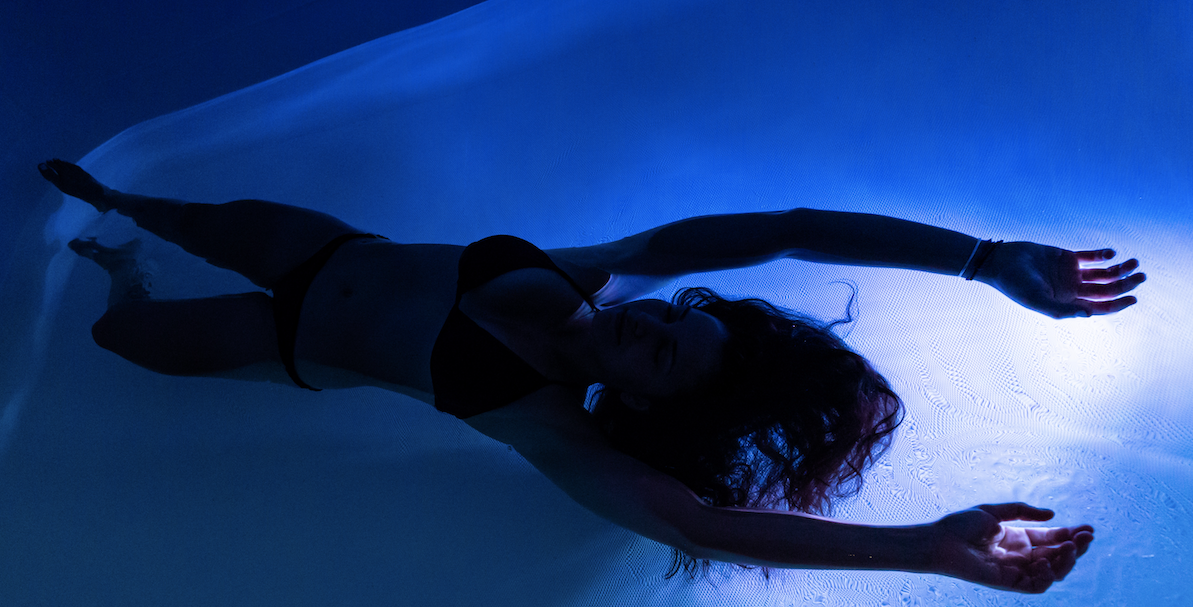What is Float Tank Therapy?

We live in a world where we’re constantly distracted.
Your phone dings and you suddenly stop what you were doing to pick it up. Your apps create urgent, red dots and notifications that sometimes demand immediate attention. It’s normal and, often a requirement, to spend hours on Zoom meetings, take online courses, respond to emails and scroll social media.
Even when you aren’t deliberately focusing on what’s happening around you, your subconscious brain is monitoring your environment. This means you are constantly receiving input of some sort. For example, when I’m lying on my bed to meditate, I still hear the cars passing outside on the street, sense the chill of the AC on my skin, feel the soreness from yesterday’s leg workout, recognize that it’s still daytime and smell the food burning in the oven (oops)!
How about what’s happening in your head? Maybe you’re caught in a negative thought spiral. Perhaps you’re trying to solve a problem, needing to be creative, or already exhausted and stressed. I know my brain races all day, especially when I attempt to multi-task or have too much to do.
Imagine if there’s a place you could go where you wouldn’t be distracted by anything? No sight, no smell, no sound and no feeling.
Enter, floatation therapy.
What is flotation therapy?
Floating is a therapy used to remove all sensory input from the body. Floating allows deep relaxation to the body and mind.
Most float tanks fill up with about 12 inches of super-salty water and ~1500 lbs of magnesium sulfate (Epsom salt). Since the water is denser than your body, this means you float to the top of the water — it’s science!
Sight – there is no light in the tank
Touch – the water is the same temp as your skin receptors ~93.5°F
Sound – there is no sound, and you wear earplugs
Taste – your face is above water, so you don’t taste the salt
Smell – the smell of the water is completely neutral
You can spend anywhere from 60 to 90 minutes or longer in the float tank to reap the benefits, including:
- Better sleep
- Speedy recovery from exercise
- Relaxation
- Mental ease
- Etc.
The benefits of floatation therapy are different for each person and each float is unique.
Floating is the closest thing I have found that makes me feel I have pressed a reset button. When I experience burnout from working too much, not sleeping well or needing some quiet time or a break, I float.
My favorite benefits of floating are speedy recovery and better sleep! I track everything with my Oura ring (a wearable sleep tracker) and am always excited to see the data.
Here’s what happens to my recovery when I float:
Heart Rate – my heart rate drops and my breathing slows, allowing my body to rest.
Sleep – my percentage of deep sleep increases (deep sleep is essential for muscle repair and growth)
Muscle Recovery – magnesium is required for over 300 reactions in the body, meaning the body uses it, and without it, we can’t do 300 things well! Magnesium is known as the chill mineral and absorbs best through our skin.
Floating is pretty much a super high dose of a chill pill.
Have you tried floating?
There are several float centers in Austin that you can try. I float once per week at The Ocean Lab! Zero Gravity and TrueREST are fantastic, too.
I’ve completed over 100+ floats over the past five years and highly suggest it to anyone seeking quick muscle and mental recovery. Floating is terrific for relief from stress, anxiety or workaholism!
Krista is a nutritionist, habit coach, and online fitness trainer. Her passion in life is teaching others to dream big and Live Large, which starts with health. Krista is an Ole Miss Rebel and runs her own brand and business based here in Austin. You can learn more about her at livinglargewellness.com.






